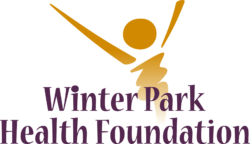Healing the Gut Through Nutrition and Lifestyle Changes
The beginning of gut health research focused on the role of microorganisms and how they can attract the attention of basic infectious diseases based on the health and nutrition of the subject. Today, this research has evolved and sparked popularity on how we can prioritize our gut health and the microorganisms that make up the gut microbiome far beyond the connection of gut health and infectious disease. Some research looks at the effect nutrition has on promoting gut health and healing the microbiome. A few ways to heal your gut microbiome are incorporating pro and pre-biotics, having a balanced diet, and exercising daily. Recently, CHWB hosted two programs with healing the gut microbiome at the forefront of the programs’ foci – Food as Medicine: How to Feed Your Gut Microbiome and Optimize Your Microbiome: Decrease Inflammation and Chronic Disease.
Program presenters Allison Harrell, RD, Dr. Karen Corbin, PHD, RD, and Dr. Laura Varich shared their expert insights and advice on the Gut Microbiome. Here are key takeaways from each.
What is the Gut Microbiome?
The gut microbiome is made up of trillions of microorganisms that affect each other and the digestive system. There are more microorganisms in your gut than cells in your body. These microbes release hormones, impact how you think, and affect how many calories you absorb from the foods you eat. According to the Cleveland Clinic, “a biome is an ecosystem characterized by its environment and inhabitants.” The gut microbiome can be compared to a garden — if you feed it the right nutrients, the flowers will flourish, and you will too. When you starve the microbiome, it can upset your entire body. Your gut microbiome interacts with many systems in your body, so it’s important to feed it the correct nutrients so that the bacteria in your gut can help break down complex carbohydrates, fibers and resistant starches while producing important nutrients and synthesizing vitamins like B1, B9, and B12.
Food as Medicine: How to Feed Your Gut Microbiome
Allison Harrell, RD, and Dr. Karen Corbin, PhD, RD, Principal Investigator at the AdventHealth Translational Research Institute, led the Food as Medicine: How to Feed Your Gut Microbiome cooking demonstration during which they shared recipes and tips on what food should be added to your diet to feed your microbiome. Dr. Corbin discussed the research done around the microbiome and how choosing a diet that feeds the microbes can affect feeling full and the ways we consume food. This research found that individuals who ate a gut microbiome diet compared to the western diet absorbed 116 fewer calories per day because of how microbes helped divert nutrients to the body. The study also found that when eating the microbiome diet, the microbes grew and created molecules like GLP-1, a common component in certain diabetes and obesity medication, and diverted calories away from the person.
A component to the microbiome diet that aided in gut health were foods rich in fiber like legumes, nuts, and seeds. Did you know that the body is supposed to consume 14 grams of fiber for every thousand calories per day? Diets rich in fiber are great for the microbiome due to how it ferments in the gut and secretes essential fatty acids. During the discussion with Dr. Corbin, Allison Harrel prepared three menu items to feed the gut microbiome: Turkey Picadillo, Baked Tostones, and a Spanish Bulgar Wheat Salad, all foods rich in protein and fiber.
Watch the full webinar on feeding the gut microbiome with Allison Harrel and Dr. Karen Corbin HERE.
Optimize Your Microbiome: Decrease Inflammation and Chronic Disease
In “Optimize Your Microbiome: Decrease Inflammation and Chronic Disease”, Dr. Laura Varich, a Certified Lifestyle Medicine physician, covered the role of antibiotics on gut health, pre-biotics to feed your microbiome and probiotics to grow your microbiome. When prescribed antibiotics, it’s important to use them only when necessary and exactly as directed; eat fiber-rich foods to replenish your microbiome after a round of antibiotics to speed up the healing process. Eating fiber-dense foods like whole grains, fruit, vegetables, legumes, nuts, and seeds feed the microorganisms in your gut. Fermented foods are also a form of probiotics that help grow the microbes in your gut. Examples of fermented foods include kimchi, kombucha, yogurt with active cultures, and kefir.
A healthy gut microbiome improves digestion, destroys harmful bacteria in your body, helps control your immune system and has a positive impact on energy and mood. It’s important to recognize the components of a gut-healthy diet and incorporate those foods into your everyday meals to live a healthier and happier lifestyle.
About the Cooking Programs hosted at the Center for Health & Wellbeing:
CHWB hosts multiple cooking demonstrations and nutrition programs designed to assist you on your journey to finding healthy food swaps, adding additional vegetables and fruits to your diet, creating meal plans with a focus on specific medical diagnoses, and creating healthy habits that stick. Hosted in CHWB’s Nutrition Theatre, program attendees are encouraged to sample items prepared by culinary experts, dietitians, and medical professionals while engaging and learning about the nutritional value in our everyday meals.
Register for one of CHWB’s Cooking Programs HERE.






